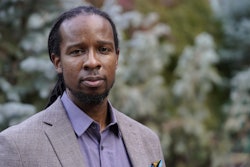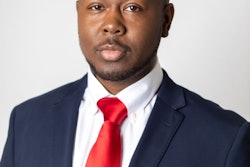Duke’s Devil of a Mess
With the rape case against three Duke lacrosse players unraveling, a group of Black faculty are now accused of rushing to judgment.
By Christina Asquith
Durham, N.C.
Last spring, at the height of the frenzy over accusations that three Duke University men’s lacrosse players had gang raped a Black exotic dancer during a party, faculty from Duke’s African and African American studies department chose to take a stand.
With emotions running high, the faculty decided to take out a full-page advertisement in student newspaper, the Duke Chronicle, quoting the fears that minority students had expressed in a recent campus forum.
“I wonder now about everything … if something like this happens to me, what would be used against me? My clothing?” one student had asked.
“This is not a different experience for us here at Duke University,” another student said. “We go to class with racist classmates, we go to the gym with people who are racists … It’s part of the experience.”
While almost no criminal evidence had been made public at that early stage as to whether a rape had actually occurred, professors felt that the Black students’ broader complaints over racism and sexism on campus should be aired.
“Black students were being told, ‘There isn’t any racism or sexism, and if you talk about that, you’re attacking the lacrosse players,’” recalls Dr. Wahneema Lubiano, an associate professor of literature in the AAAS department. “Every time we raised it, people told us to shut up.”
The ad received endorsements from a total of 88 professors representing 13 departments, mostly in the humanities.
The Chronicle ran the ad on April 6th, 2006, to little fanfare.
However, a year later, it has taken center stage in a blogger-fueled campaign against the professors, saying they falsely accused the lacrosse players. The issue has turned personal, and three professors have received death threats.
The rape charges have now been dismissed, the alleged victim has been largely discredited and District Attorney Mike Nifong is under investigation for ethics violations. With the case unraveling, the Group of 88, as they have been referred to, are now facing fierce criticism that their own biases fueled a “lynch-mob mentality” on campus that has destroyed the reputations of three young men, whose families are saddled with more than $3 million in legal fees. One lacrosse player has filed a lawsuit against visiting political science professor Kim Curtis, saying he was failed because he was a member of the team.
“The impact of the ad was devastating,” says Dr. Steven Baldwin, a chemistry professor at Duke. “This was a large segment of faculty, some highly respected, and it really swung the pendulum against the lacrosse players.”
The Swinging Pendulum
Members of the Group of 88 say they have received hundreds of e-mails, many of which were racist and threatening in tone.
In January, Fox TV news cameras showed up unannounced at the home of two professors, demanding to know if they “felt bad … for convicting the players.” Duke alumni, who are known for their generous donations to the university, have complained to the administration about the faculty.
In response, a handful of the embattled professors are actually turning up the volume instead of backing down. In published statements, they say the “social disaster” ad did not deal with the lacrosse players’ guilt or innocence, and they accuse their critics of attacking their scholarship and trying to silence their calls to end racism and sexism at Duke.
“There’s a whole industry out there seizing on the opportunity to pillory a group of faculty members as leftist, racist, elitist, avant-garde Marxist people,” says Dr. William Chafe, a history professor and one of the 88 signatories. “They are creating a wonderful straw person to attack.”
But the groups defending the players, which include Duke alumni, students, professors, and a Brooklyn college professor who runs the popular blog Durham in Wonderland, say the lacrosse players are the victims.
Jason Trumpbour, a Duke alumnus and spokesman for Friends of Duke, a group formed last year to defend the lacrosse players, calls Chafe’s comment “ridiculous.”
“This isn’t about ideology,” Trumpbour says. “What we’re criticizing them of doing is prejudging the guilt of the lacrosse players and using the players’ troubles to call attention to their
own social issues.”
Sorting Out the Victims
Did the Group of 88 rush to judgment, and in doing so act out the exact prejudices they aim to combat?
Perhaps the most vociferous attack on the lacrosse players came days after the rape allegations aired. Dr. Houston A. Baker Jr., the former president of the Modern Language Association and a former endowed chair at the university, wrote a scathing letter to the administration, which he made public.
“Young, white, violent, drunken men among us — implicitly boasted by our athletic directors and administrators — have injured lives,” he wrote.
University provost Peter Lange, the administration’s top academic officer, accused Baker of prejudice for “presuming one knows something must have been done by or done to someone because of his or her race.”
“We will not rush to judgment,” Lange wrote in a response to Baker. Shortly thereafter, Baker and his wife, Dr. Charlotte Pierce-Baker, left Duke for Vanderbilt University. Baker has not responded to interview requests, and neither he nor the university will comment on his departure.
At the peak of the furor, District Attorney Mike Nifong was publicly accusing the three players of gang rape with such conviction that he is now under investigation for ethics violations by the North Carolina Bar Association. But even as DNA tests came back in the players’ favor and evidence surfaced of prosecutorial misconduct, at least a dozen Duke professors weighed in via op-eds and essays presuming the guilt of the players as a symbol of more widespread problems on campus.
Lubiano wrote on an AAAS blog that Duke had extensive problems with racism and sexism, and chided those who defended the lacrosse players and accused the dancer of loose morals.
Later on that summer, Dr. Karla Holloway, an endowed professor of English and law at Duke, published an article in The Scholar & Feminist Online that accused the lacrosse players of flouting their privilege at the expense of Black women.
“At Duke University this past spring, the bodies left to the trauma of a campus brought to its knees by members of Duke University’s lacrosse team were African-American and women,” she wrote.
“The lacrosse team’s notion of who was in service of whom and the presumption of privilege that their elite sport’s performance had earned seemed their entitlement to behaving badly and without concern for consequence.”
Lubiano insists that the professors’ remarks are within the boundaries of “talking about” an issue, without presuming guilt or innocence.
“Think of O.J.,” she says. “Did anyone say, ‘You can’t talk about criminal justice inequality?’ You can’t not talk about things because of this huge spectacular event going on. Otherwise, O.J. would sue millions.”
Some professors, like AAAS professor Mark Anthony Neal, say they were careful not to jump to conclusions about the players’ guilt. Neal, specifically, posted a blog article that took Blacks to task for dismissing crimes against Black women. But it hasn’t insulated him or other professors from criticism.
“Regardless of whether or not anyone is indicted and convicted in the case, the reality is that women will continue to be raped and those sexual assaults will continue to be met with silence and a degree of dismissiveness that hold the victims accountable for attacks on their bodies,” Neal wrote.
Chafe penned an article in the Duke Chronicle last March trying to give context to White-on-Black violence — but he says he was misinterpreted.
He wrote: “At some point in the past or present, White males have ‘had their way’ with Black women. White slave masters were the initial perpetrators of sexual assault on Black women.”
Chafe’s research focuses on race and gender, and he says it was his role as a history professor to frame the discussion in a historical context.
“It didn’t have any reference toward the guilt or innocence of anyone,” he says. “This generation has very little historical sense of the depth of the issues in Southern history, and I was trying to talk about the pervasiveness of those linkages, all the way back to Thomas Jefferson and Sally Hemings. We’re talking about something integral to the history of the country and
the South.”
The various comments generated little interest when they were originally published last year. But now bloggers are poring through the articles searching for examples of bias. The turning point came in December 2006, after the rape charges were dropped and it was revealed that Nifong had hidden evidence that would have exculpated the players. Within weeks, Brodhead had invited the students back to campus and recommended the appointment of a special prosecutor.
Suddenly, it seemed that the media frenzy and accusations had been for naught. Seemingly overnight, the role of victim veered from the dancer to the players. And the Group of 88’s “Social Disaster” ad was resurrected as evidence of the rush to judgment.
Making It Personal
“They hooked their cause on a fraudulent case,” says Dr. K.C. Johnson, who runs Durham in Wonderland, the blog that has closely followed the case almost from the beginning. “They gambled with their ad that the lacrosse case would illustrate what they saw as broader problems at Duke, but they gambled wrong, and they’ve been unwilling to admit that. And by refusing to condemn Mike Nifong, by refusing to apologize for their rush to judgment, they’ve lost credibility.”
The backlash against the Group of 88 began with bloggers like Johnson and groups like Friends of Duke. Members of the economics department wrote a letter to the Duke Chronicle in support of the lacrosse players, and dozens of letters to the Chronicle have also expressed anger at the Group of 88. For the most part, these groups are asking the Group to join the university in inviting the lacrosse players back to campus, and also to retract their ad.
While Johnson has never made outwardly racist comments, those who follow his blog are suspected of besieging professors with racist, personal and menacing rants. One professor has been signed up for book and CD clubs, which then sent her bills. Another professor has had the death of her son evoked on blog comments. Others say they feel their safety is in jeopardy.
“The power of anonymity has been taken to extremes on all sides,” says Dr. Michael Gustafson, an assistant professor of engineering at Duke who says he attended a recent Group of 88 panel discussion out of interest. “I was initially wary of the Group of 88, but I am adamantly opposed to the way some of the faculty who signed it have been treated.”
Johnson, for example, has scrolled through the course reading lists of professors, looking to highlight evidence of bias for his blog. He reads professors’ essays dating back 10 years to find examples of what he sees as inappropriate political activism. And he has embarrassed professors by calling attention to unfinished book projects. Johnson rose to nationwide attention in 2004 when, despite a doctorate from Harvard University and numerous publication credits, he was denied tenure at Brooklyn College, supposedly due to his conservative politics and brusque personality. He eventually received tenure.
As the debate has shifted from the lacrosse players to the Group of 88, it has also been increasingly laced with questions about the very usefulness and productivity of Black studies and women’s studies.
Neal, of AAAS, sees the shifting focus as evidence that the critics are motivated more by subsurface racism than by the circumstances of the rape case.
“We’re always in a mode to justify what we do, always justifying why African and African American studies and women’s studies departments exist,” he says.
But Johnson argues that it was the Group of 88 who first injected race into the case. He also claims that they ignored evidence in pursuing claims of sexism and racism on campus. He says the group should speak out equally against what he calls “Black racism”— illustrated by derogatory comments made by Black students and faculty about the White players.
“The 88 claim that sexism and racism are prevalent on campus. That’s an extraordinary allegation,” he says. “It’s also reckless and untrue, and they have not been able to produce much evidence to substantiate it.”
Questions and disagreements linger even within the Group of 88. Holloway and other professors have said, rape or no rape, “something happened” at the party that night, and it is indicative of a dangerous culture bred by men’s athletics and embedded racism. Yet Neal and Dr. Lee D. Baker, an anthropology professor in AAAS, both say there is less racism on Duke’s campus than in the nation in general. The faculty committee investigating the lacrosse team, led by law professor James Coleman, who is also Black, found no evidence of racism, sexism or privilege among lacrosse players, and he calls their reputation “unfair.”
But Coleman defended the Group of 88’s ad as an expression of concern of racism on campus. He says the real criminal in the case is Nifong, whose provocative pronouncements of guilt added fuel to an already emotional case. According to Coleman, Nifong’s actions are symptomatic of the way prosecutors railroad innocent victims for personal gain.
“Everyone is acting like these students are the only people treated unfairly by the justice system,” Coleman says. “It happens every day, and nobody cares because they are usually poor minorities and everyone assumes they’re criminals.”
Certainly, though, there is racial tension among faculty, which everyone agrees has only been aggravated by the high-profile case. In his letter last fall, Baldwin wrote that faculty who criticized the lacrosse players, “should be tarred and feathered, ridden out of town on a rail and removed from the academy.” The comment generated an immediate response, as Holloway and others objected to its racial connotations.
Baldwin later offered a public apology, although he says tarring and feathering have medieval roots and are not racist.
Shut Up and Teach?
The controversy shows no sign of dying down.
In response to criticism over their “Social Disaster” ad, Group of 88 members decided in January to issue a clarification. Some members questioned whether an apology was in order.
“We had a long discussion about what the word ‘regret’ means, and philosophy professors weighed in and we had detailed discussions in terms of the epistemology of specific words,” says Baker. “If you talk to 80 different college professors, you’ll have 80 different opinions.”
In the end, no apology was issued. Instead, the clarifying statement reiterated their innocence and their earlier points that sexism and racism must be addressed on campus.
It read: “There have been public calls to the authors to retract the ad or apologize for it, as well as calls for action against them. We reject all of these calls. We think the ad’s authors were right to give voice to the students quoted. Their suffering is as real as the anguish of those who have
been accused.”
Then, a handful of the Group of 88 professors held a town hall meeting entitled: “Shut Up and Teach?” in which they charged their critics with attacking freedom of speech and the professors’ departments.
Meanwhile, the facts of the lacrosse case have drifted into the background. Many fear the real fallout for Duke’s AAAS department is that potential new faculty will go elsewhere.
Last year, six Black faculty left the school. Lange said they would be replaced this past September with 10 Black faculty, but others dispute this figure.
Duke is well known for spending more than $1 million building up the reputation of AAAS between 1993 and 2003. Currently, there are about 85 Black professors on campus, roughly 4 percent of the university’s 2,500 faculty. AAAS has five full-time faculty.
Diane Ozemebhoya, a 20-year-old pre-law political science major, says she would just like to find some way for Black and White students to start communicating with each other and iron out misconceptions.
“There are a lot of good people. They think race is over, and that’s where we vary,” she says. “So, once you explain the effects of our history, then we can start talking to each other.”
© Copyright 2005 by DiverseEducation.com


















